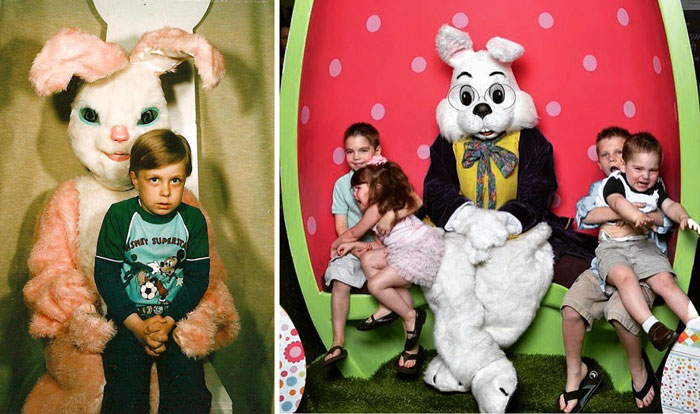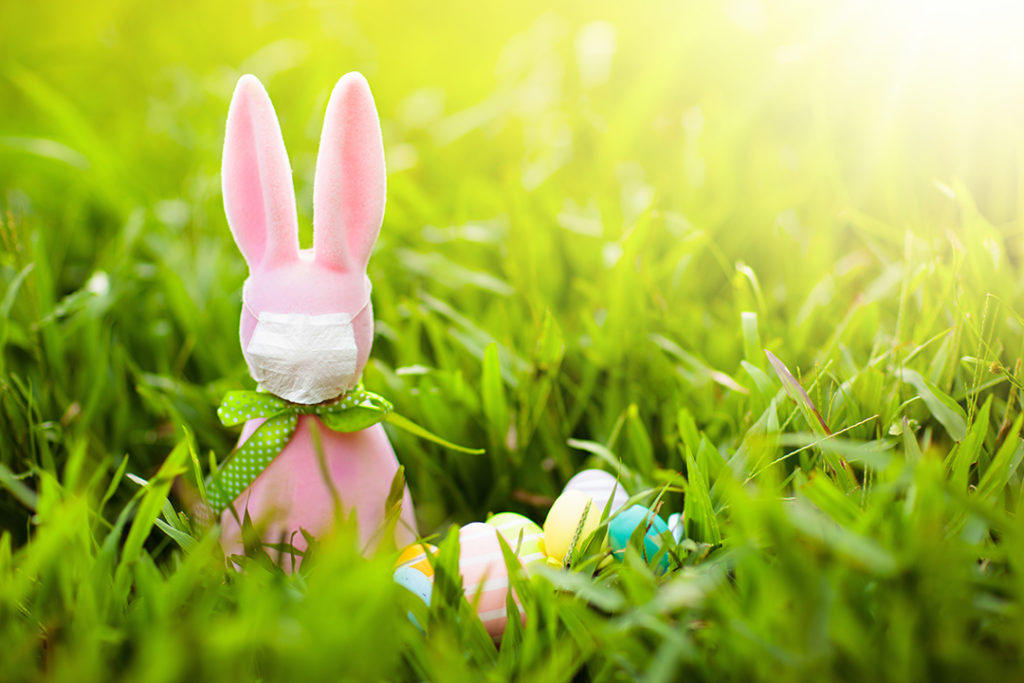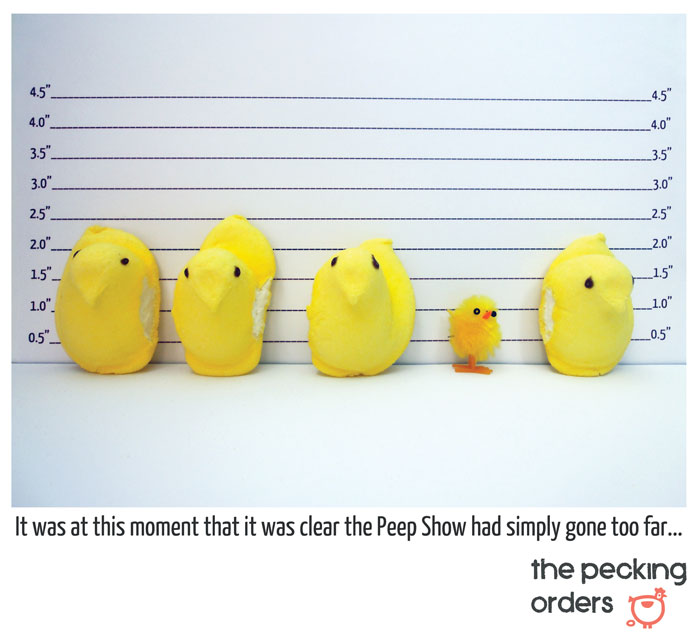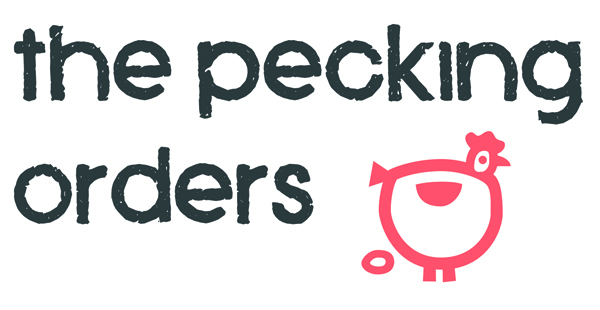It’s that time of year again! The time when I get completely confused by the traditions we think are totally normal! The tradition this time of year? The muthah-friggin Easter Bunny. I mean, what? We are a weird people, people.
What does a creepy bunny who somehow lays eggs have to do with the resurrection of Jesus? There is no mention of an Easter celebration, Easter eggs, or the Easter bunny anywhere in the Bible, so where did it come from? I did the research to get to the bottom of this trippy bunny trail (Epic pun! Virtual high five!).

I admit the research was unfulfilling because it’s not clear where our Easter traditions come from. What is clear is most of our Easter traditions have nothing to do with Jesus at all, and most are truly pagan (egad, the heathens strike again!).
Spring Fling
The return of spring has always been a time for celebration because back in the day making it through winter was a pretty big deal. Almost every ancestral culture celebrated the return of light and life, usually kicked off by the Vernal Equinox on March 21. The Vernal Equinox is the day when the amount of day and night are equal, which means from that day on there will be more light and less dark. Sayonara Snowmaggedon, bienvenidos margaritas!
Spring is a time for life, birth, and fertility. Ancient traditions honored common symbols of spring such as rabbits — due to their stellar reputations as prolific baby-makers (a female rabbit can get pregnant while already pregnant. Dang, rabbit girls), and eggs — long-held, pretty obvious symbols of fertility and birth.
The most widely accepted theory on the origin of the word “Easter” is that it was derived from Eostre (Ostara), the Germanic goddess of dawn, spring, and fertility. The Anglo-Saxons would celebrate Eostre’s return every spring, honoring her symbols — the rabbit and the egg — and coloring eggs to express appreciation for Eostre’s gift of abundance.

There is suspiciously little written about this goddess, however. In fact, she is only officially mentioned once by one English monk and historian, St. Bede, in an 8th-century book. He wrote that Ēosturmōnaþ (‘Month of Ēostre’ in Old English), was a time to celebrate a goddess of spring and fertility he called Eostre. And that’s pretty much it. No one else talks about her in any other book, before or contemporary to Bede. Because of this, some theorize Bede simply made Eostre up, which makes part of me really happy because that means this entire megaholiday came from a few flippant lines written by one dude.
Over time, the legend of Eostre evolved. There are many different versions, but essentially one year Eostre arrived late for spring and to make up for it she saved a bird who was partially frozen by snow. The bird could no longer fly so Eostre turned it into a rabbit (her earthly symbol) but retained its ability to lay colored eggs (her other earthly symbol) that it gave to children. And here we have one theory on the origin of the Easter Bunny. To be continued later…
What is amazing to me is that this whole thing — the origins of the word Easter, the existence of the goddess Eostre, her turning a bird into a bunny, and possibly the Easter Bunny himself — may have been completely fabricated by single individuals with sweet imaginations.
I love this stuff!
What Came First: the Rabbit or the Egg?
The tradition of dyeing Easter eggs and giving candy eggs has a few origin theories:
- To honor the mysterious Eostre’s bird-turned rabbit that laid brightly colored eggs that were given to children.
- As mentioned before, eggs were widespread symbols of new life and fertility found in pre-Christian cultures. Many old customs involve decorating eggs and giving them as gifts around the Vernal Equinox. Eggs were boiled with flowers and other materials to change their color to bring spring color into the home.
- Decorating eggs are seen by many Christians as a symbol of Jesus’ empty tomb and thus His resurrection, and some dyed eggs red to symbolize Jesus’ spilled blood.
So what came first, the rabbit or the egg? My opinion is since so many cultures, including as old as the Egyptians, Persians, and Romans, all used eggs as symbols of spring, this pagan rabbit came before the Christian egg. Research shows that the association between Easter, eggs, and Jesus’ empty tomb came in the 15th century when Roman Catholicism became the dominant religion in Germany. It seems very likely, and very natural, that the tradition merged with already ingrained pagan traditions.
Pulling a Rabbit Out of a Hat
Regardless of whether Eostre was a fabricated goddess or not, rabbits were always associated with spring festivals and what came to be Easter.
At some point, the Germans took the pagan fertility rabbit, probably smashed with the legend of Eostre, and turned it into Oschter Haws (“Easter Hare”), a hare that lay colored eggs for good children. The first mention of Oschter Haws was in the 1600s, and when the Pennsylvania Dutch settled in America in the 1700s, they brought the hare with them. Over time, Oschter Haws evolved into the Easter Bunny and now he’s in a mall near you! (Or at least he would be if we weren’t all quarantined)

Just like they did with Santa Claus, the Germans took a pagan character to the next level (what were the Germans smoking back then? Impressive imaginations). Same as the history of Santa in the United States, the Puritans rejected this pagan character for a long time and it wasn’t until the mid-1800s that it was widely adopted and incorporated into Christian traditions. And just like Santa Claus, the original purpose of the bunny was to incentivize children into good behavior with the promise of candy since — news flash: candy is somewhat important to children.
The Resurrection of Easter
After all this research, it is clear that the Easter Bunny and Jesus’ resurrection are totally unrelated. They were two separate celebrations. So while we can’t thank Jesus for Cadbury Eggs, we can still thank God or Eostre or the Vernal Equinox or promiscuous bunnies or whatever you honor for the start of spring.
For me, the fact that Easter is the amalgamation of pagan traditions, Christian traditions, and maybe even certain individuals’ complete fabrications doesn’t do it any disservice. I think it gives it even more depth. Celebrating the beginning of spring is reason enough for feasting, pastel party dresses, and jelly beans.
And that makes me so very — don’t do it, Sunna — egg-cited. *groan* For Peeps sake!
Things They Forgot to Mention:
Our traditions are much stranger and mishmashed than they appear. They began rooted in nature, hobnobbed with religion, and ended covered in chocolate.



April 2, 2015
So fun to follow your significant research ladled over with humor and wonder.
April 2, 2015
I’m my father’s daughter, after all…
April 2, 2015
Eddie Izzard has a great comedy set he does on this topic – if you haven’t seen it before – well worth finding.
April 2, 2015
Count Dominic, I’ll have to look into that. Bet it’s hilarious!
April 2, 2015
Wa ha ha hahaha
I’m LOLzing all the way home.
April 2, 2015
This little Fatty LOLzed all the way home! Ready, set, bice!